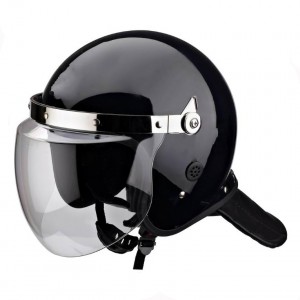Riot helmet testing standards are crucial for ensuring the safety and effectiveness of riot gear used by law enforcement and security personnel. These standards provide a rigorous framework for testing the durability, impact resistance, and overall performance of riot helmets in various riot and crowd control scenarios. The goal is to ensure that these helmets offer the highest level of protection for the wearer while also allowing for maximum mobility and comfort. In this article, we will explore the importance of riot helmet testing standards and how they impact the overall quality of riot gear.
One of the key aspects of riot helmet testing standards is the rigorous testing of materials used in the construction of the helmet. Materials such as polycarbonate, fiberglass, and ABS plastic are commonly used in riot helmet construction, and testing standards ensure that these materials can withstand the impact of projectiles, blunt objects, and other potential hazards encountered during riots and civil unrest. Additionally, these standards also evaluate the helmet’s ability to resist penetration from sharp objects and other potential threats, ensuring the wearer’s safety in high-risk situations.
Another critical component of riot helmet testing standards is the evaluation of the helmet’s overall design and construction. This includes assessing the helmet’s weight distribution, ventilation, and adjustability to ensure that it can be worn comfortably for extended periods. Rigorous testing standards also consider the helmet’s ability to withstand extreme temperatures and environmental conditions, as riot control situations can occur in a wide range of settings and climates. By thoroughly evaluating these factors, testing standards ensure that riot helmets are not only protective but also practical for real-world use by law enforcement and security personnel.
In addition to physical testing, riot helmet testing standards also encompass the evaluation of the helmet’s impact attenuation and shock absorption capabilities. This involves subjecting the helmet to various impact tests to simulate the force of projectiles, thrown objects, and physical assaults that may occur during a riot or civil disturbance. Testing standards dictate the specific criteria that helmets must meet in terms of impact resistance, ensuring that they provide sufficient protection against potentially life-threatening injuries.
The importance of riot helmet testing standards is further underscored by the release of riot helmet test results. These results provide valuable insights into the performance and durability of specific helmet models, allowing law enforcement agencies, security firms, and other organizations to make informed decisions when selecting riot gear for their personnel. By adhering to established testing standards and making test results publicly available, manufacturers can demonstrate the quality and reliability of their products, instilling confidence in the end-users and the general public.
In conclusion, riot helmet testing standards play a critical role in ensuring the safety and effectiveness of riot gear used by law enforcement and security personnel. The rigorous testing of materials, design, impact resistance, and shock absorption capabilities ensures that riot helmets offer the highest level of protection while also being practical for real-world use. The release of riot helmet test results further contributes to transparency and accountability in the industry, allowing organizations to make well-informed decisions when choosing the appropriate riot gear for their personnel. Ultimately, adherence to testing standards and the publication of test results are instrumental in preserving the safety and well-being of those tasked with maintaining public order and safety in potentially volatile situations.
Post time: Mar-14-2024








